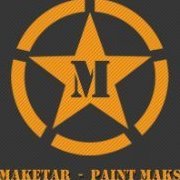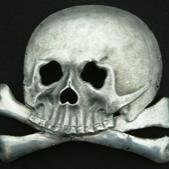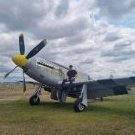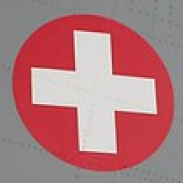-
Posts
504 -
Joined
-
Last visited
-
Days Won
4
Madmax last won the day on January 1 2022
Madmax had the most liked content!
Profile Information
-
Gender
Male
-
Location
South Africa
Recent Profile Visitors
2,866 profile views
-
 Victor K2 reacted to a post in a topic:
Sharkmouth to Sabotage - a Hunter's Tale
Victor K2 reacted to a post in a topic:
Sharkmouth to Sabotage - a Hunter's Tale
-
 Madmax reacted to a post in a topic:
Heavy Attack - US Army AH-64E Apache Guardian
Madmax reacted to a post in a topic:
Heavy Attack - US Army AH-64E Apache Guardian
-
 Madmax reacted to a post in a topic:
Heavy Attack - US Army AH-64E Apache Guardian
Madmax reacted to a post in a topic:
Heavy Attack - US Army AH-64E Apache Guardian
-
 Madmax reacted to a post in a topic:
Heavy Attack - US Army AH-64E Apache Guardian
Madmax reacted to a post in a topic:
Heavy Attack - US Army AH-64E Apache Guardian
-
 Madmax reacted to a post in a topic:
OIF Blackhawk
Madmax reacted to a post in a topic:
OIF Blackhawk
-
 Madmax reacted to a post in a topic:
Brown B-2 „Miss Los Angeles” 1/32
Madmax reacted to a post in a topic:
Brown B-2 „Miss Los Angeles” 1/32
-
 Madmax reacted to a post in a topic:
Brown B-2 „Miss Los Angeles” 1/32
Madmax reacted to a post in a topic:
Brown B-2 „Miss Los Angeles” 1/32
-
 Madmax reacted to a post in a topic:
Hasegawa P-40N
Madmax reacted to a post in a topic:
Hasegawa P-40N
-
 Madmax reacted to a post in a topic:
Hasegawa P-40N
Madmax reacted to a post in a topic:
Hasegawa P-40N
-
 Madmax reacted to a post in a topic:
Thunderbolt ...
Madmax reacted to a post in a topic:
Thunderbolt ...
-
 Madmax reacted to a post in a topic:
Thunderbolt ...
Madmax reacted to a post in a topic:
Thunderbolt ...
-
 patricksparks reacted to a post in a topic:
Sharkmouth to Sabotage - a Hunter's Tale
patricksparks reacted to a post in a topic:
Sharkmouth to Sabotage - a Hunter's Tale
-
 Fanes reacted to a post in a topic:
Sharkmouth to Sabotage - a Hunter's Tale
Fanes reacted to a post in a topic:
Sharkmouth to Sabotage - a Hunter's Tale
-
 Derek B reacted to a post in a topic:
Sharkmouth to Sabotage - a Hunter's Tale
Derek B reacted to a post in a topic:
Sharkmouth to Sabotage - a Hunter's Tale
-
 Derek B reacted to a post in a topic:
Sharkmouth to Sabotage - a Hunter's Tale
Derek B reacted to a post in a topic:
Sharkmouth to Sabotage - a Hunter's Tale
-
 MikeA reacted to a post in a topic:
Sharkmouth to Sabotage - a Hunter's Tale
MikeA reacted to a post in a topic:
Sharkmouth to Sabotage - a Hunter's Tale
-
 SwissFighters reacted to a post in a topic:
Sharkmouth to Sabotage - a Hunter's Tale
SwissFighters reacted to a post in a topic:
Sharkmouth to Sabotage - a Hunter's Tale
-
 denders reacted to a post in a topic:
Sharkmouth to Sabotage - a Hunter's Tale
denders reacted to a post in a topic:
Sharkmouth to Sabotage - a Hunter's Tale
-
 LSP_Kevin reacted to a post in a topic:
Sharkmouth to Sabotage - a Hunter's Tale
LSP_Kevin reacted to a post in a topic:
Sharkmouth to Sabotage - a Hunter's Tale
-
 Paul in Napier reacted to a post in a topic:
Sharkmouth to Sabotage - a Hunter's Tale
Paul in Napier reacted to a post in a topic:
Sharkmouth to Sabotage - a Hunter's Tale
-
Time to get this airframe assembled. There are some 'hard to get to' areas associated with the intake that are probably best painted before assembly, like behind the splitter plates. I sense a tricky bit of masking coming up. Having cut out the auxiliary slots, it will look better if they have a dark background. The same applies to the boundary layer duct openings above and below the wing. Thanks to Tony alerting me to the Reskit exhaust, I took a good look at how it is assembled (to allow for painting), as well as how small the thermocouples actually are. My first attempt was a bit overstated, so I redid them. A good shot of Alclad 'Jet Exhaust' helps to tone it down and darken the interior. I stuck a ruler down the fuselage, with the intakes in place, to figure out just how long the exhaust actually is. Remember the tail cone is approximately another 3cm to add to this. It's a long plane! Before glueing the tail-section in place, I had a look at the airbrake. Initially I felt that it should be closed, but many photos show it slightly open on the ground (as the hydraulic pressure drops, it droops). The inside of the airbrake itself is actually rather nicely done, probably by the 'Chaps from Flaps'. That being said, the hydraulic actuator was clearly made by the 'Intakes and Instructions' crew - very much a 1:72nd scale approach to things! So, I chopped an opening into the fuselage and made a long actuator body that can be glued into the opening. Much better for 1:32 scale... The horizontal stabs got a bit of refining, sanding the 'roundness' out of the elevator (which many kitmakers employ to get a fake sharp trailing edge), and lightly riveting them. At last, it is starting to look like a Hawker Hunter! Even without the wings in place, it has beautiful lines - a real thoroughbred. Thinking of Max embarking on the last bit of work on his Hunter, I thought of how many times the placement of gear doors and their fiddly little connecting arms has flummoxed me! I am hoping this solution will help avoid the typical outcome of that step, when I end up looking like a kindergarten kid, full of glue, and not one ice cream stick attached to the toilet roll. I've reversed the 'paddle pops' from the instructions, drilled holes in the paddles, and inserted pegs on the gear legs for these to fit onto. The lengths are still a bit of an unknown, but at least one side of the linkage won't need glue. Let's see how that goes. Nearly time to attach the wings, but I thought I'd finish the wheel wells and flap interiors first, while they are still easy to handle. You'll notice that this is going to be a well used fighter! Cheers, Sean
-
Great insights, thanks Mike.
-
That's Ok Craig, more entertainment for us!
- 1,582 replies
-
- 3d printing
- hk models b-17
-
(and 4 more)
Tagged with:
-

RAF FG.1 XV571 WILD HARE Phantom Conversion
Madmax replied to Anthony in NZ's topic in Works in Progress
Epic, in many ways! I'm concerned that one day you are going to complete this... -
You've got me wondering Mike - new camera or new phone? Either way, the result is fantastic. Suddenly I can see the reddish brown tones in the weathered OD. Great stuff!
-
Thank you! You are not alone in this Hunter breeding program. A mate of mine popped in yesterday, keen to see my progress on the model, but he clearly doesn't have access to the hormones or whatever you're feeding your kits - he only has 4 in his stash! Thanks Tony! Tricky question. I think that any extra weight aft of the main wheels will obviously require more weight in the nose, and it is quite a long lever arm to the back of the model. I have roughly measured it, and despite my 30cm jet exhaust exaggeration, it would actually be close to 21cm. I sadly don't have a Reskit exhaust (it wasn't available when I was ordering AM stuff way back when), so the question really is how heavy it is? I can't imagine too heavy, since it is a printed part. Checked it out online today, and it looks fantastic - wish I had one. I reckon one should just live with a heavier model, and buy brass gear legs!
-
Back to the story. We last left XF309 in the capable hands of Hawker Siddeley Aviation(Ltd), where she was about to undergo an upgrade to FGA.9 standard. In her case, she was about to become what was known as an FGA.80, meaning that she was an FGA.9 destined for the Kenyan Air Force. Most FGA.9's were updated Mk.6's, but as you may recall, our star was a lowly Mk.4 dressed up as a Mk.5! She would be getting a big makeover, as explained in the following photograph of what I believe is a Mk.5, but will suffice for illustrative purposes. On completion of her transformation, our Hunter was ferried to (presumably Nanyuki) Kenya via Malta, where the prolific photographer, Mr John Visanich, took this photograph: https://www.airhistory.net/photo/390322/805 You will notice that she now carries the Kenyan Air Force serial number of 805. This is at odds with what some publications say, but I believe it to be correct. 'Wingleader Magazine', for example, had XF309 as becoming KAF 806, but that's just part of the intrigue of tracing an aircraft (or a racehorse's) provenance! The airfame 'Wingleader' touted for KAF 805 (WT778) was indeed sold to the Kenyan Air Force, but in pieces - as spares. Enough intrigue for now. Here is a colour photo of a Kenyan Air Force Hunter (803) as it passed through Malta in 1974, on its way to Africa. It would seem that Revell GmbH put their top team (the 'Chaps from Flaps') on tail-section and propulsion. Despite some warnings about the fit of these extremities, I found them to be superb. I can just imagine Kurt, Willy and Ernst, slide rules in hand, replicating such a very British part at 32 times smaller than it should be. Their team leader, Herr Pabst von Ohain (this is meant to be amusing) took this shrinking thing to a new level, and produced a 10500 lbs of thrust engine at 32 times smaller diameter, and about a 10th of it's scale length! This is a very good thing, as any more weight behind the main wheel axles would almost certainly make the model 'sit on its arse'. Here is a photo of the diminutive power-plant (the little tube below the ruler). The tail-section itself, with its drag chute housing, is beautifully moulded and fits perfectly onto the rear fuselage. The photo above shows it dry-fitted in place. In the photo below you can see how well the shape is reproduced. I merely added a little fictitious structure to the internal 'ribs' to finish them off where there is a gap on the top and bottom. The instructions advise glueing and taping the power-plant in place, but being a bit wary of the instructions, I dry fitted things first and discovered one can just pop the engine in afterwards. It does take a bit of imagination to look down 3cm of jet exhaust and imagine it to be 30cm, but maybe some very dark paint will help. The thermocouples were added in an attempt to create an illusion of depth. Lets see. Maybe a FOD cover instead? Cheers, Sean
-
Thank you Paul! It is actually a lovely kit, so I have an easy job enhancing certain areas. Only solution, thanks Mike! If you look closely, you will actually spot mistakes in the riveting all over the show. Like many others who indulge in this insanity, I draw pencil lines where I think the rivets generally exist, and then free-hand the riveting wheel down the lines (or as close as possible). Often, the accuracy is better at a reasonable pace, so you don't have to concentrate for all that long! Give it a go sometime... Hi Max, thanks for checking in. Your Echelon Hunter must be very, very close to completion by now - but I notice there is often another Hawker aircraft to distract you.
-
The rivets really make this pop! Excellent tonal values too...
-
I have to admit that the air intake assembly has taken me a bit by surprise. It is a lovely bit of moulding, but it has an inherent design problem. Come to think of it, real intake ducting for full size jets must pose some engineering challenges too. The snag is that it has to slide into two grooves on the side of the fuselage, and in order to do that it has to be flexible since the grooves taper toward the front. The instructions don't really solve this puzzle, unless I have missed something? The first step indicates that the parts should be glued together, but held together with tape. I understood this as: tape will be required to hold the parts together while the glue dries. Notice also that the assembly is 'upside down' at this point. Tape will definitely be necessary to squeeze these shell halves together! I cut auxiliary bypass slots into the trunking, after going to school on all the information that Art Murray gleaned on his Swiss Hunter build. And painted the inside a creamy white to look like the flexible intake paint used in the later marks of Hunter. Then I glued the intake halves together, not thinking about all the warnings not to in previous posts, and not attempting to slide them onto the fuselage first. Dry fitting is just so boring! Now it was a simple case of following the instructions, flipping the assembly over and popping it onto the nose section... Even though it says to use glue (in the corner of the instruction box), even I could clearly see Mr Revell didn't really recommend glue for this step. But of course, the intake doesn't slide into position, no matter how good you are at twisted metal puzzles or Rubik's cubes. So I resorted to the next best thing - force! In this photograph, I make it look as if I planned a solution, but of course I didn't. The intake broke. It does however now slide into the slots with a bit of scraping sounds, and If you are intending to build one of these in the future, you might want to just leave the glue off one side of the splitter plates. Then it's flexible enough to squeeze into position... Right, now that that is out of the way, I wanted to lightly rivet the aircraft as the basis for some later weathering that reveals where some rivet lines run. Rivet a Hunter??? Yes, I know that seems wrong, but just look at what I did to the intakes. I have a plan. Most of the rivets are going to disappear under paint, but I couldn't think of a way of only doing some sections. Let's see how it works out. I accentuated the rivets on the 'shoulder' of the aircraft, since that's where the most of the weathering happens. Then I got a bit carried away with the top of the wings. The patterns are really intriguing... At least I left most of the underside unblemished by the wheel of holiness. I am really impressed with the flaps. Despite requiring a bit of attention on the ejector pin marks, they are a lovely subtle bit of detail. Mr Revell clearly put his best team on flaps, and the rest were left to work out the intakes, and instruction drawings. Apparently the tail assembly and mini-jet pipe have some issues. Maybe I'll actually contemplate that section before reaching for the glue. Until then, Cheers! Sean
-
Hi Alain, I know you've got a thing for wheel wells too! I agree, something would have been missing... thank you. I'll be following your example in future Kev! Hey Nick, I think I was actually an aircraft hydraulic pipe; trapped in an airliner and seemingly always under pressure! This has become abundantly clear to me Derek. Thanks Zac, there's still a long way to go. Enjoy!
-
An excellent choice Peter - I suspect people are going to faint from sheer delight when they discover what it is (assuming Shoggz, Derek and I hit the same Google button)! Korean colours would be awesome... just saying.
-

Trumpeter MiG 29 C (digital Ukrainian camo) finished
Madmax replied to chrish's topic in Works in Progress
WOW Chris, the heated metal effects on these exhaust nozzles is absolutely fantastic! -
Hello John, I have to admit that the wheel-well fetish is truly silly. I don't ever leave my models upside down in the display cabinet! Howzit Black Mamba! Yeah, I think it will pop under some silver, and a lot of oil and grime... Thank you! Hey Tony, I took a look at the G-Factor gear. It does look great, but was sadly not part of the Hannants catalogue when I was shopping for AM. Brass looks like a far better choice for the legs in comparison to the near crystalline metal in the SAC casting. Thanks for the input, much appreciated! Hi Kev, yup - SAC. I don't have much experience working with their products, and in retrospect it looks as if one should possibly just use a fine wire brush on the legs to clean them up. The heavy filing and sanding clearly isn't the best approach! Thanks Jaro, I'll do my best to keep you entertained! The intakes should be fun, since it looks like there are a whole lot of different approaches to getting them glued together, if one glues them at all...
-
After a rather lengthy contemplation, something finally happened! It's the bas-relief effort that many kit manufacturers apply to detail that clearly doesn't resonate with me. Even though it can be enhanced with clever paintwork and washes, it still lacks depth. So, I decided to make one particular portion of the wheel well deeper - the bit that sits right up against the fuselage. This section is characterised by ribs, cables and what looks like a drive shaft of sorts. Here is the kit part that was cut out, and the ribs and longerons that will replace the kit's shallow representation. I then added some deeper sides to the well and glued on a flat styrene roof. Doesn't look like much from this side, but it actually adds an amazing amount of depth. Once the replacement structure is in place, the whole 3-D effect comes to life. You will notice that I also cut shaped ribs to add to the flat 'ribs' that are in the kit. Many of them are doubled-up on the actual aircraft. With the added structure in place, it was time to add as much plumbing as I felt I could, without being silly. The real aircraft is actually full of pipes and wires, but much of it is tucked away under a lip, that doesn't exist on the kit (and I certainly wasn't going to rebuild the entire well ). I have attempted to incorporate the kit's plumbing by starting and ending runs at the same points as the kit does. Since the wells were so easily accessible at this point, I figured it was a good time to work on the main gear legs. I have mentioned before that the kit mouldings are very thin towards the bottom, where the wheel attaches. Having bought cast metal legs, I reckoned the problem was sorted. I'm not terribly keen on the shabby look of the metal casting however (which is just the kit part made worse, but stronger). So I thought at any rate. No problem, out came the metal file and sand paper strips, and I set about neatening up the metal leg. After some filing and pulling strips of sandpaper over to oleo to get it to shine beautifully, I discovered that the uneven heating of the metal had curled up the leg like a shrimp chip in hot oil! I quickly straightened it out while it was still warm, but the muffled creaking sounds it made in the process make me think that my cleaning efforts have possibly compromised the metal's strength? Not wanting to push and prod too much, I decided to look at a way of strengthening the original kit legs. Here is the cleaned (and mostly straightened) leg to compare with the casting straight from the box. The kit leg got chopped up and cleaned back to basic shapes. Metal rods have been shoved in wherever possible and a strip of flat brass on the thin lower part of the leg will hopefully do the trick - otherwise the aircraft is going onto jacks - which might even be appropriate as you'll see by the end of the story! At least the Reskit wheel looks great... The retraction/extension piston also got some metal added, for strength, and to get the arm length correct. It all looks rather nice, upside down, with no weight on it! Almost time to contemplate the next step - the engine intakes! Cheers, Sean







